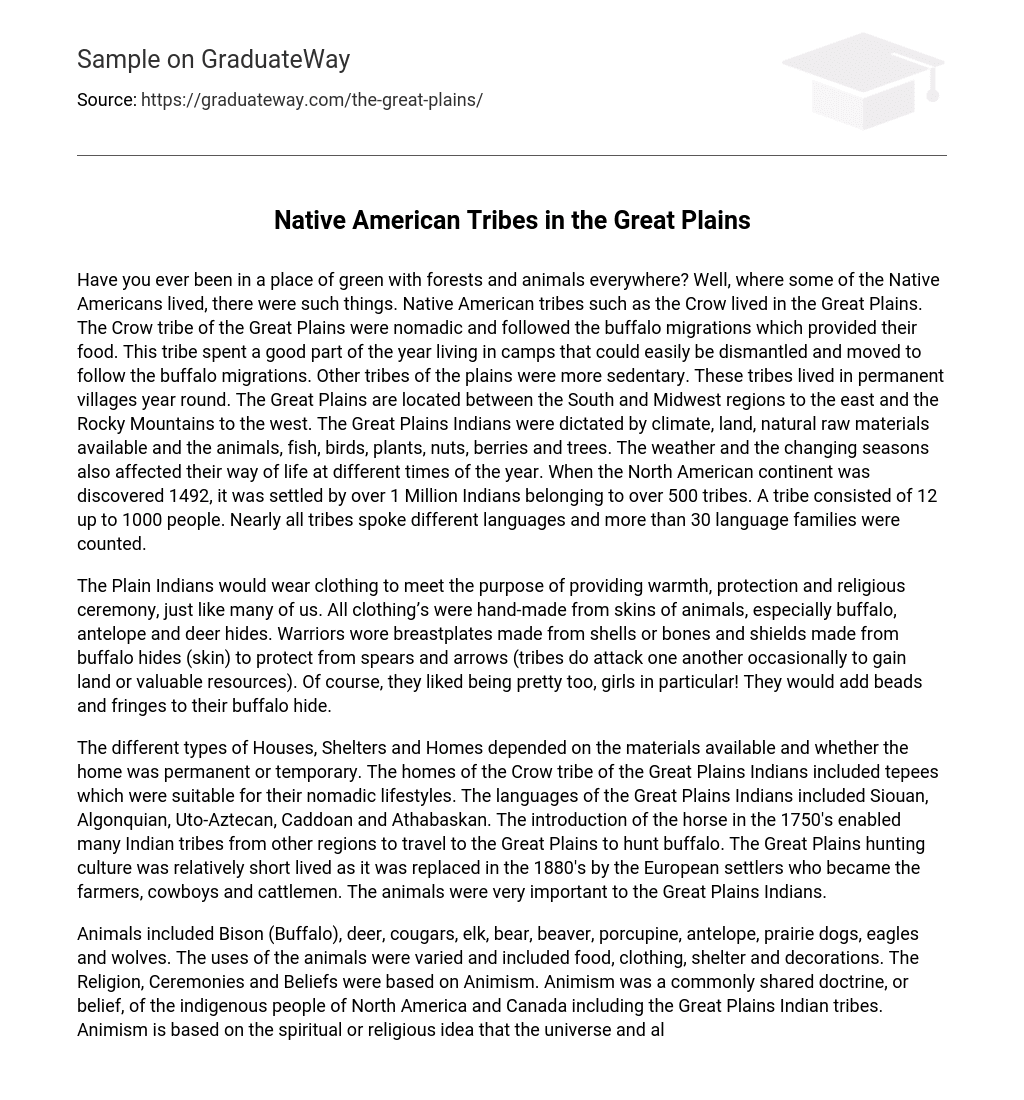The Great Plains region was home to lush green forests and abundant wildlife, including various Native American tribes such as the Crow tribe. The Crow tribe followed buffalo migrations and lived in portable camps, while other tribes preferred settling down in permanent villages. Situated between the South and Midwest regions to the east and the Rocky Mountains to the west, the Great Plains significantly influenced its indigenous inhabitants’ lifestyles. These tribes adapted to the climate and utilized natural resources like animals, fish, birds, plants, nuts, berries, and trees. Weather patterns and seasonal changes throughout each year also impacted their way of life. When European explorers arrived in North America in 1492, they encountered over 1 Million Indigenous people from more than 500 tribes with varying sizes ranging from 12 to 1000 individuals who spoke languages belonging to over 30 language families.
The Plain Indians wore clothing for various reasons, including warmth, protection, and religious ceremonies. Similar to many of us, their garments were hand-made from animal skins, with a preference for buffalo, antelope, and deer hides. Warriors would wear breastplates made from shells or bones and shields made from buffalo hides to defend against spears and arrows. Occasionally, tribes would engage in battle to acquire land or valuable resources. However, aesthetics also mattered to them, especially for girls. They would embellish their buffalo hide clothing with beads and fringes.
The housing structures used by the Great Plains Indians were influenced by material availability and durability. The Crow tribe, known for their nomadic lifestyle, preferred tepees as their main dwellings. Linguistically, the Great Plains Indians spoke various languages including Siouan, Algonquian, Uto-Aztecan, Caddoan, and Athabaskan. The introduction of horses in the 1750s allowed tribes from different regions to migrate to the Great Plains for buffalo hunting. However, this hunting culture was short-lived due to European settlers taking control in the 1880s and transitioning into farming, cowboy activities, and cattle ranching instead. It’s important to note that animals held significant cultural importance among the Great Plains Indians during this time period.
The Great Plains region was inhabited by a variety of animals, such as Bison (Buffalo), deer, cougars, elk, bear, beaver, porcupine, antelope, prairie dogs, eagles, and wolves. These animals served different purposes in providing food, clothing, shelter, and decorations.
The indigenous people of North America and Canada shared a belief system called Animism. Animism is a spiritual or religious concept that acknowledges the existence of souls or spirits in all natural entities throughout the universe. This belief includes not only humans but also animals, plants, trees rocks and even natural phenomena like thunderstorms and rain.
The Plains people worshipped Manitou or the “Great Spirit.” Men carried a “Medicine Bag or Bundle” containing herbs for Smudging Rituals as part of their customs.
The legends and mythology of the Plains peoples include references to the “Great Spirit”, the “Sun Dance”, and “Vision Quest Tricksters”, as well as heroic figures known as “Transformers” who shape the world into its current form. The Native American Crow tribe experienced a decline in population due to food scarcity and conflict, but it was not a common occurrence for tribes in the Grassy Plains to engage in total warfare or be completely wiped out. While many tribes perished in the past, some managed to survive and adapt their way of living.
To illustrate, rather than endangering their village population by sending out groups, the Crow tribes possibly utilized traps to capture animals. Some tribes may have faced extinction as raids from other villages resulted in the takeover of their territory. Moreover, with the arrival of white settlers came diseases that Native Americans had no immunity against, unlike the already exposed whites. As a result, many Native Americans fell ill and entire tribes were wiped out.
Bibliography:
http://www.indians.org/articles/plains-indians.html,
http://nativeamericans.mrdonn.org/plains.html,
http://www.native-languages.org/plains-culture.htm,
http://memory.loc.gov/ammem/award98/ienhtml/tribes.html, and
http://whitewolve.com/native_americans/indexblok.plains.htm





